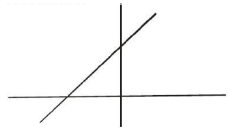The Lineweaver-Burk plot is a graphical representation used in enzyme kinetics, derived from the Michaelis-Menten equation. The Michaelis-Menten equation describes the relationship between the initial reaction velocity (\(v_0\)), substrate concentration (\([S]\)), maximum velocity (\(V_{max}\)), and the Michaelis constant (\(K_m\)). The Lineweaver-Burk equation, which is the reciprocal of the Michaelis-Menten equation, allows for a linear transformation of this relationship, making it easier to analyze enzyme kinetics.
To derive the Lineweaver-Burk equation, we start with the Michaelis-Menten equation:
\[ v_0 = \frac{V_{max} \cdot [S]}{K_m + [S]} \]
Taking the reciprocal of both sides gives:
\[ \frac{1}{v_0} = \frac{K_m + [S]}{V_{max} \cdot [S]} \]
By rearranging this equation, we can separate the terms in the numerator:
\[ \frac{1}{v_0} = \frac{K_m}{V_{max} \cdot [S]} + \frac{1}{V_{max}} \]
This can be expressed in the form of a linear equation \(y = mx + b\), where:
- \(y\) corresponds to \(\frac{1}{v_0}\) (the reciprocal of the initial reaction velocity),
- \(m\) (the slope) is \(\frac{K_m}{V_{max}}\),
- \(x\) corresponds to \(\frac{1}{[S]}\) (the reciprocal of the substrate concentration), and
- \(b\) (the y-intercept) is \(\frac{1}{V_{max}}\).
This linear relationship allows for easier determination of kinetic parameters from experimental data. The slope of the Lineweaver-Burk plot provides insight into the enzyme's efficiency, while the intercepts can be used to calculate \(V_{max}\) and \(K_m\). Understanding this relationship is crucial for analyzing enzyme behavior and kinetics in biochemical studies.



